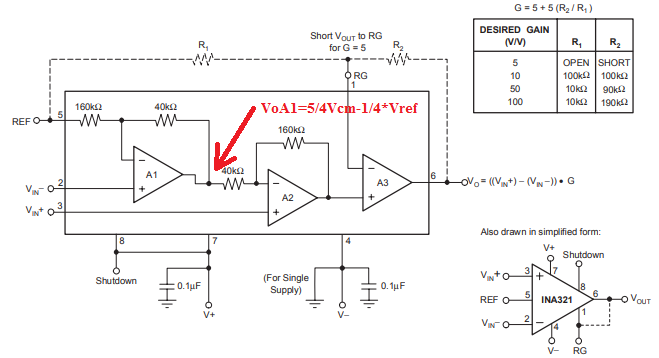Other Parts Discussed in Thread: INA321, INA2331
I'm developping a product that will use two pressure gauges connected to each amplifier of an INA2321 (or 2331 if results are too slow).
I choosed this amp because I have very high low power constraints, and it features a sleep mode. I will wake it up 2000 times in a second and start performing measurements 10-20µs approx after waking it up, and then return to sleep.
The gauge is resistive so it matches perfectly the Figure 2 of the datasheet.
Power supply for amplifier and gauge is 2.8V. So Vcm will be 1.4V (+/-5% max I guess).
The final gain will be between 10 and 20, still not determined.
High precision is not required (1% is ok, or even 5%...), because I need to make detection, not precise measurement, but I need low power and fast amplifier. So I guess that with INA2321 I will achieve my timings, even if I start the measurements before the output voltage is fully stabilized very close to final value (0.1% or 0.01%, useless for me).
I have some doubt about the explanations given about the REF level and the input common voltage range.
I read the the Vcm max is Vs-1.2V, so 1.6V in my case, higher than my Vcm, so it's ok.
But I don't understand the Common voltage vs Reference voltage characteristic and the formula Voa1= Vcm*5/4 - Vref/4.
Could you please tell me how it can affect my circuit ? In my case the Vcm will always equal to Vs/2 +/-5%.
Aurelien












